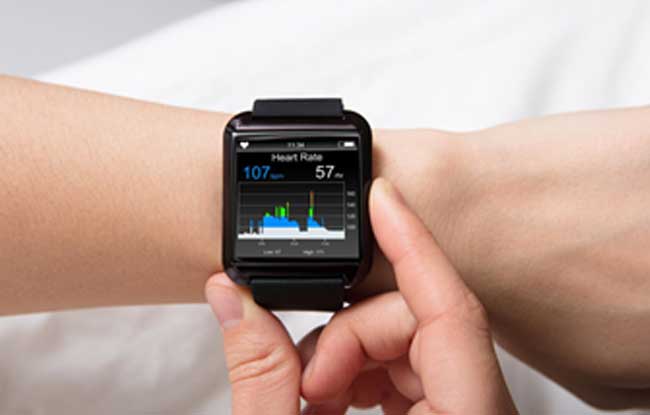At this moment, nearly a quarter into the 21st century, data collection has revolutionized how we look at our world. As wave after wave of data are collected and analyzed, new and actionable insights come into focus. Some industries use those data to advertise, while others deploy it in the prediction of elections. But in the healthcare industry, this information represents a tremendous step forward in the treatment of ailments big and small.
The best methods of data collection ultimately rely on user participation. As new tech emerges to assist healthcare providers in data collection, all eyes have turned to health information technology (HIT) and the data gathered from collaborations between patient and provider.
The UAB Health Informatics program is dedicated to tracking these emerging HIT trends so that our thought leaders and students can assume a greater role in shaping healthcare’s future. Here are the top 5 HIT trends making waves today.
Wearable Tech
Broadband, WiFi, and the nearly ubiquitous connectivity on which we’ve come to rely can be used to gather enormous quantities of biomedical data from wearables. A physician can examine a snapshot of patient vitals, but a fuller picture may be found in extended, daily observations. Observing how one’s body responds throughout the day could lead to new avenues of investigation and even new options for treatment.
As the general public gets more used to wearable health technology (like smartwatches or Fitbits), we can expect a greater number of people to provide their own data, further assisting with treatment.
Telemedicine
The COVID-19 pandemic brought telemedicine into our homes. Remote appointments with medical professionals are here to stay. These remote meetings increase patient/provider interactions and ultimately permit the greater exchange of information. As the field of telemedicine advances to include apps, smart devices, and wearable tech, this form of healthcare could make remote medical advice more accurate.
At the end of the day, the promise of telemedicine as a continuing HIT trend has more to do with healthcare and the devices used in health and wellness meeting the patient wherever they are rather than the other way around.
Artificial Intelligence
Far from the cruel overlords of science fiction, artificial intelligence is both a current and evolving tool within the healthcare industry. Already used to operate “chatbots” and responsive, digital help desks, artificial intelligence will one day grow powerful enough to review diagnoses, and analyze test results.
To the already taxed healthcare industry and its human providers, artificial intelligence serves as a tireless assistant—one that’s purposefully designed for increasing interactions with patients themselves.
Augmented/Virtual Reality
For patients and providers, virtual reality (VR) and augmented reality (AR) provide numerous, first-time treatment opportunities. VR is swiftly proving a vital tool for counseling, trauma treatment, and other therapeutic uses. AR, on the other hand, is translating data and test results to help providers reconsider that information in a more accessible way. This allows both patient and provider to understand, explain, or recontextualize a health issue.
As a translator of data, or as a transportive tool in the treatment of psychological illness, AR and VR have nearly countless possibilities in the medical sector.
Cybersecurity
At first glance, healthcare and cybersecurity would seem to have little in common. But the need for increasingly tight cybersecurity capabilities comes as the result of ransomware attacks on healthcare institutions and the increasing amount of data collected by healthcare providers.
As more and more information comes in from other HIT sources, the need to protect that information from hostile actors similarly increases. When literal lives are on the line, something has to stand between a patient’s private medical information and those who seek to hold healthcare systems hostage.
Shape the Future
The UAB Health Informatics program is leading the way in emerging technologies and the kinds of data-gathering endeavors they encourage. To enhance, support, and build upon the above listed technologies, our Health Informatics program interrogates HIT to further curate technological applications throughout the healthcare industry.
Future healthcare providers will need to consider health information technologies at the same rate that users are considering the value of information provided by them. A more collaborative, personalized, and data-driven approach is possible, but only if the students of today learn what they need to bring that future about.
To learn more about the UAB Health Informatics HIT track, or to submit your application for candidacy, visit us online.
Apply To The UAB MSHI and start shaping the future today!
The future doesn’t simply arrive; it has to be built. If you’re interested in the intersection between data science and medicine, or if you want to be a part of the next leap forward in healthcare, you can find out more about the UAB Health Informatics program here. At UAB, the future begins with you!
